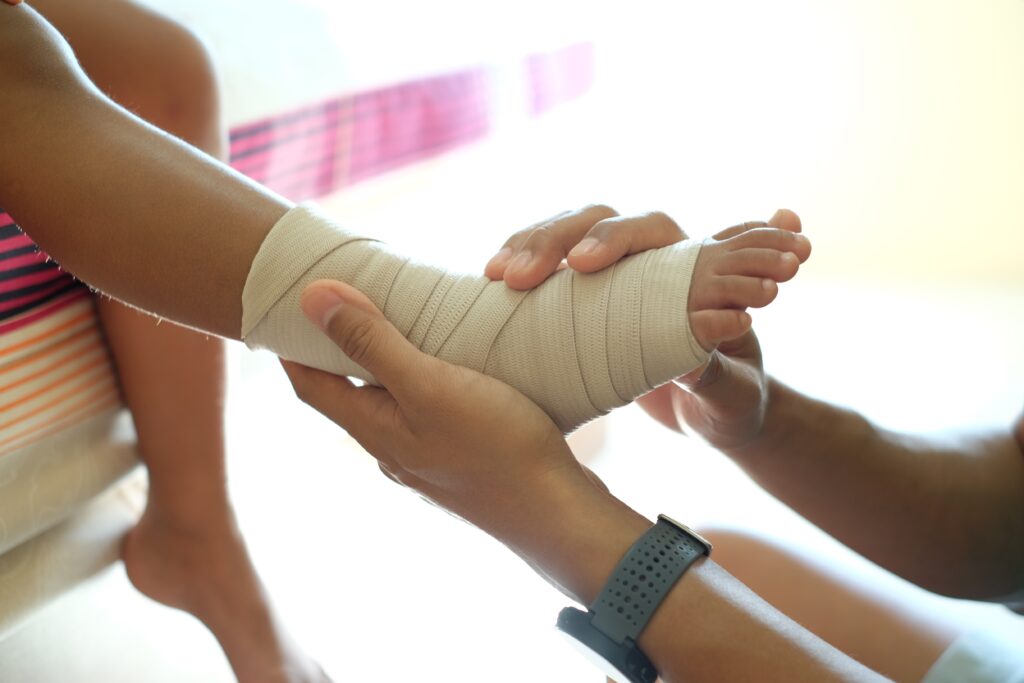
Ankle sprains are among the most common injuries, affecting people of all ages and activity levels. They occur when the ligaments that support the ankle stretch beyond their limits and, in severe cases, tear. Such injuries can result from a simple misstep, sports activities, or an awkward fall, leading to pain, swelling, and a compromised walking ability.
Understanding Ankle Sprains
The severity of an ankle sprain is graded based on the extent of ligament damage. Grade 1 sprains involve slight stretching and microscopic tearing of the ligament fibers. Grade 2 sprains are characterized by partial ligament tearing and abnormal looseness (laxity) in the ankle joint. Grade 3 sprains, the most severe, involve a complete ligament tear and significant ankle instability.
Symptoms typically include pain at the site of the tear, swelling, and bruising. The pain may be worsened by putting weight on the affected foot. Depending on the sprain’s severity, a person may also experience joint stiffness, tenderness, or a popping sensation at the injury’s time.
Immediate Ankle Sprain Treatment: The R.I.C.E. Method
The initial ankle sprain treatment is the R.I.C.E. method, which stands for Rest, Ice, Compression, and Elevation. This approach aims to reduce swelling, pain, and further damage to the tissue.
- Rest: Rest your ankle to avoid exacerbating the injury, and consider using crutches for severe cases to offload weight from the affected area completely.
- Ice: Rap the ice in a cloth to prevent skin damage, and consider a cold pack if ice is not readily available.
- Compression: An elastic bandage not only supports the ankle but also helps to control swelling; just ensure it is evenly wrapped without restricting blood flow.
- Elevation: Your foot should be maintained as much as possible, even while sleeping, by propping the ankle with pillows to ensure it stays above heart level, facilitating fluid drainage and reducing swelling.
Professional Care
While the R.I.C.E. method is effective for minor sprains, professional evaluation and treatment are crucial, especially for more severe injuries. A healthcare provider may recommend the following:
- Physical Therapy: To restore the ankle’s strength, flexibility, and range of motion. Physical therapy may include exercises, balance training, and other modalities to speed recovery and prevent re-injury.
- Bracing or Casting: For more severe sprains, immobilizing the ankle can be necessary to allow the ligaments to heal properly. A brace or cast helps to support the ankle as it heals.
- Surgery: In cases where the injury involves a complete tear of the ligaments or is associated with a fracture, surgical intervention may be necessary to repair the damage.
Preventing Re-injury
Preventing future ankle sprains is crucial, as repeated injuries can lead to chronic ankle instability and other long-term problems. Here are some tips to minimize the risk:
- Strengthening Exercises: Performing exercises on a regular basis that strengthen the muscles around the ankle can help stabilize the joint and prevent sprains.
- Proper Footwear: Wearing shoes that provide adequate support, especially during physical activities, can reduce the risk of an ankle sprain.
- Be Mindful of Surfaces: Uneven or slippery surfaces increase the risk of ankle injuries. Being cautious and avoiding risky environments can help prevent sprains.
Recovery and Beyond
The recovery time from an ankle sprain varies depending on the injury’s severity. Minor sprains may heal within a few weeks, while more severe sprains may take several months. Adhering to a comprehensive treatment plan, including physical therapy and at-home care, is essential for a full recovery.
Ankle sprains require prompt and appropriate care to ensure a complete recovery and prevent future injuries. By understanding the causes, treatments, and preventive measures, individuals can better navigate the recovery process and confidently return to their daily activities.
Visit Pediatric Orthopedic Specialists for Ankle Sprain Treatment in Utah
If your child has suffered an ankle sprain, immediate and effective treatment is crucial for a swift recovery and return to their active lifestyle. At Pediatric Orthopedic Specialists, our team is dedicated to providing the highest standard of care tailored to the unique needs of children. Don’t let an ankle sprain slow your child down. Contact us today to schedule an appointment and start your child on the path to recovery. Trust Pediatric Orthopedic Specialists for compassionate, expert care every step of the way.

